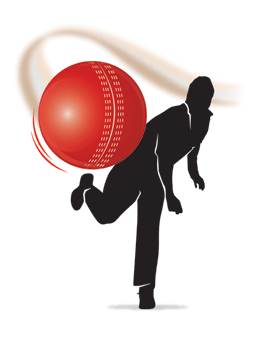Wicketkeeper Standing Back Drill: Relevant, Functional and Challenging

The challenge with any wicket-keeping drill is to make it relevant, functional and challenging.
Last week, we were doing a standing back drill using the Katchet board. I was throwing the ball onto the board as hard as I could to challenge the two keepers. The keepers are both County Age Group players and in one of the cases, an England International.
It soon became apparent that both were not being challenge sufficiently by the drill and that my shoulder was getting warmer and warmer. We needed to solve a problem.
That solution was the Sidearm. Since a recent Sam Lavery article on coaching kit, I have noticed more players have purchased Sidearms. It's great to see sessions where players are practising batting in pairs against the sidearm. It’s a brilliant piece of kit.
I decided to ease my shoulder by attempting to throw the ball onto the Katchet using a Sidearm. The results were awesome.
Here's my view,
Fewer Byes: Wicketkeeping Problems Solved

If you have ever kept wicket then you will know that most of the balls that disappear past you for byes end up going under the line of your gloves, and most balls that you drop hit the end of your fingers rather than smacking securely into the palm of your hand.
"Stay Down! I’ve told you before, stay down!"
How many times have I heard this coaching input?
The answer is too many. The statement doesn't help at all. So what should we do as a keeper or advise as a coach?
The keeper needs some options that leads to her to stay down longer and ultimately, to help her to come up with the bounce of the ball.
We can take a technical approach, an intention based approach or a combination of the two to get the desired effect.
Wicketkeeper Standing Back Drill

This is a cracking drill for wicket keepers standing back using equipment that is becoming commonplace within coaching kitbags around the world.
We are presently in a "specific preparation phase" of the programme, so much of the aim of our sessions are build volume into both keepers "catch" and to free up the movement patterns to both right and left handed batters.
The session was for two keepers. They swapped every six balls to simulate overs. We ran the session in a confined net area so I ensured that we maximised the width of the area so the keepers could move freely for offside takes and for simulated outside edges. It's just as easy to run outdoors or in the open, or both.
You can use a Sidearm, bowling machine or bowlers for the drill.
You'll also need Fusion Multi-stumps
Unlock Your Coaches' Code to Boost Your Cricket
 Has your coach ever said something to you that you don't quite get?
Has your coach ever said something to you that you don't quite get?
Don't you feel like you are missing out because you can't decode it?
You are not alone.
Turbo Boost Net Practice with Iain Brunnschweiler
 If your nets have got a bit dull and lifeless, you need to fit a turbo boost, courtesy of England Performance Programme Coach, Iain Brunnschweiler.
If your nets have got a bit dull and lifeless, you need to fit a turbo boost, courtesy of England Performance Programme Coach, Iain Brunnschweiler.
Right now "Brunchy" is realising a 6 week series of coaching sessions that anyone can take to nets to make the sessions fun, exciting sessions that will lead to better cricket from you and your team.
The latest one is out today so click here to get this week's session instantly.
10 Best Cricket Coaching Books for eReaders
More people than ever woke up on Christmas morning to a Kindle eBook reader. Who knows how many millions got their hands on an iPad or other tablet with a Kindle app ready to go.
Great gifts, but you need something to put on them.
Coaching the IPL: Wicketkeeping Techniques
In Twenty20 the wicketkeeper is often considered to be a batsman who keeps his pads on while fielding. A stopper not a show stopper.
But in IPL 6, Dishant Yagnik showed the value of an athlete and technician as keeper.
Yagnik spent a lot of time standing back to the quick men. That is a skill that requires good hands and athletic movement. In match 8 for Rajasthan against KKR he showed these skills to dismiss the danger man Gambhir.
Gambhir had walked down the wicket to force the pace, slashed at a wide ball outside off stump that flew at height to Yagnik's left.
Coach Your Keepers to Become Standing Back Legends

There are hundreds of keeping drills for standing up to the stumps. However, outside of the professional game, I see little evidence of keepers being asked to develop their capacity when standing back.
So lets address this now!
Work With Your Wicketkeeper to Take More Wickets
 Menno Gazendam is author of Spin Bowling Project. Get your free 8 week spin bowling course here
Menno Gazendam is author of Spin Bowling Project. Get your free 8 week spin bowling course here
As a spinner you have have the great advantage of taking wickets with stumpings. Shane Warne took 152 wickets with stumpings alone!
To make it work you need to have a good bond with your keeper.
How to Coach Leg Side Stumpings
 The leg side stumping is a sure fire way to change the momentum of a game.
The leg side stumping is a sure fire way to change the momentum of a game.
It's a pressured delivery from the bowler that then gets a wicket from a ball slung down legside! All of a sudden the feel of the match changes as a result of a swift bit of keeping brilliance.
There are a number of tips that I give keepers to increase their competence down the leg side and then to take that most beautiful dismissal:

